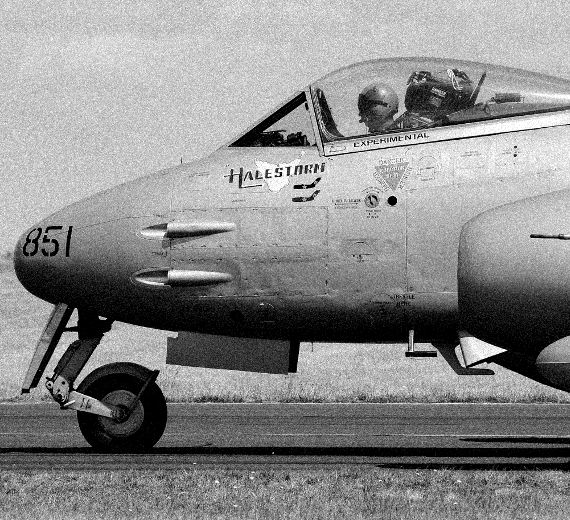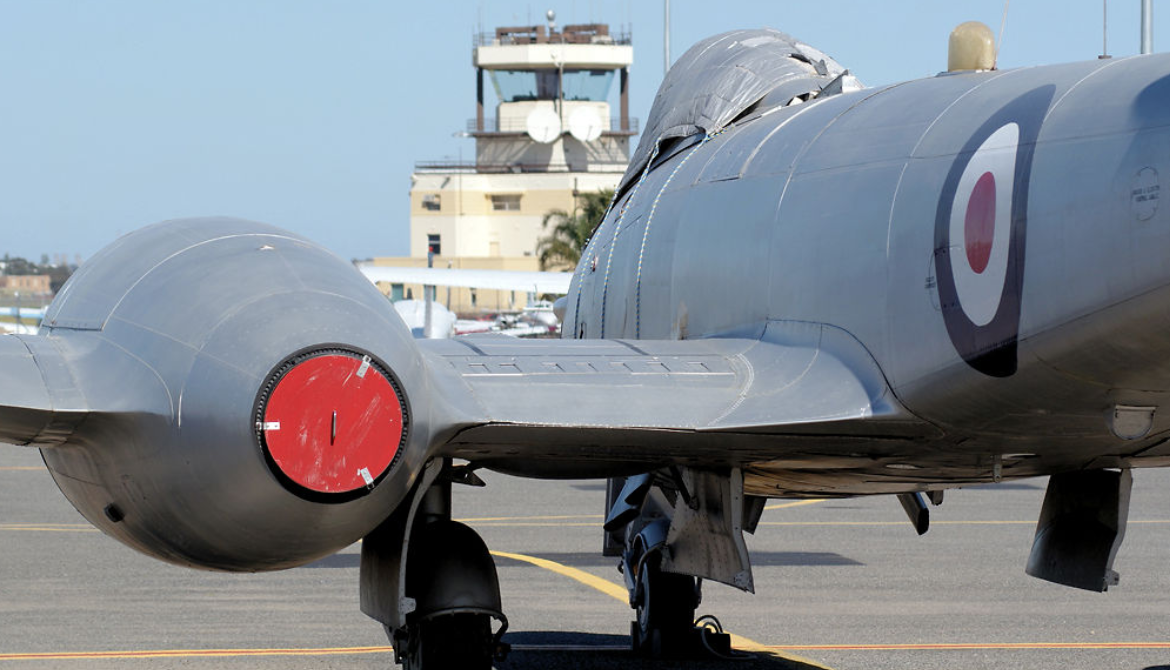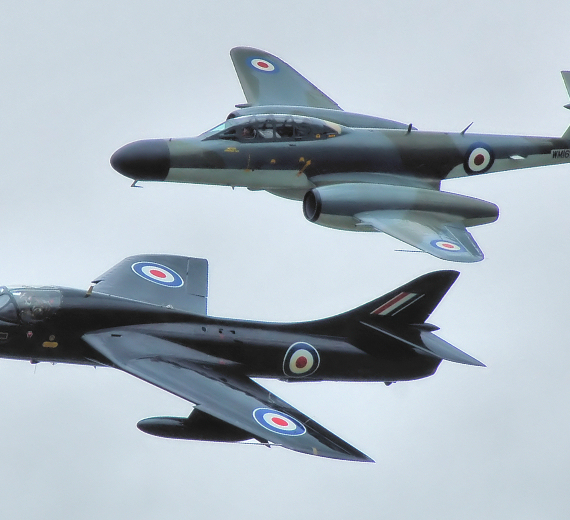Gloster Company
Gloster Meteor F.1
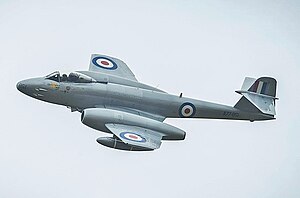 |
|
| The only F.8 in flying condition is operated by the RAAF’s Historic Flight | |
| Role | Fighter aircraft |
|---|---|
| National origin | United Kingdom |
| Manufacturer | Gloster Aircraft Company |
| First flight | 5 March 1943 |
| Introduction | 27 July 1944 |
| Retired | 1980s (RAF target tugs) |
| Status | Two in use as testbed aircraft (one with civil registration) |
| Primary users | Royal Air Force |
| Produced | 1943–1955 |
| Number built | 3,947 |
.
History Gloster Aircraft Company
Gloster Meteor F.1
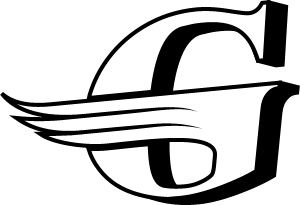
The Gloster Meteor was the first British jet fighter and the Allies' only jet aircraft to engage in combat operations during the Second World War. The Meteor's development was heavily reliant on its ground-breaking turbojet engines, pioneered by Frank Whittle and his company, Power Jets Ltd. Development of the aircraft began in 1940, although work on the engines had been under way since 1936. The Meteor first flew in 1943 and commenced operations on 27 July 1944 with No. 616 Squadron RAF. The Meteor was not a sophisticated aircraft in its aerodynamics, but proved to be a successful combat fighter. Gloster's 1946 civil Meteor F.4 demonstrator G-AIDC was the first civilian-registered jet aircraft in the world.
Prototypes

In August 1940, Carter presented Gloster's initial proposals for a twin-engined jet fighter with a tricycle undercarriage. On 7 February 1941, Gloster received an order for twelve prototypes (later reduced to eight) under Specification F9/40.[20] A letter of intent for the production of 300 of the new fighter, initially to be named Thunderbolt, was issued on 21 June 1941; to avoid confusion with the USAAF Republic P-47 Thunderbolt which had been issued with the same name to the RAF in 1944, the aircraft's name was subsequently changed to Meteor.During the aircraft's secretive development, employees and officials made use of the codenameRampage to refer to the Meteor, as similarly the de Havilland Vampire would initially be referred to as the Spider Crab. Test locations and other key project information were also kept secret.[..
Into production

On 12 January 1944, the first Meteor F.1, serial EE210/G, took to the air from Moreton Valence in Gloucestershire. It was essentially identical to the F9/40 prototypes except for the addition of four nose-mounted 20 mm (.79 in) Hispano Mk V cannon and some changes to the canopy to improve all-round visibility. Due to the F.1's similarity to the prototypes, they were frequently operated in the test program to progress British understanding of jet propulsion, and it took until July 1944 for the aircraft to enter squadron service. EE210/G was later sent to the U.S. for evaluation in exchange for a pre-production Bell YP-59A Airacomet, the Meteor being flown first by John Grierson at Muroc Army Airfield on 15 April 1944
0
KmCeiling
0
KmCombat RANGE
0
Km/hAircraft Speed
0
Max Crew
Photo Gallery
Gloster Aircraft Company
Gloster Meteor F.1


Gloster Aircraft Company
Gloster Meteor F.1
General Info
-
-
- Crew: 1
- Length: 44 ft 7 in (13.59 m)
- Wingspan: 37 ft 2 in (11.33 m)
- Height: 13 ft 0 in (3.96 m)
- Wing area: 350 sq ft (33 m2)
-
-
Powerplant
-
-
- Empty weight: 10,684 lb (4,846 kg)
- Gross weight: 15,700 lb (7,121 kg)
- Powerplant: 2 × Rolls-Royce Derwent 8 centrifugal flow turbojet engine, 3,600 lbf (16 kN) thrust each
-
Performance
- Maximum speed: 600 mph (970 km/h, 520 kn) at 10,000 ft (3,000 m)
- Maximum speed: Mach 0.82
- Range: 600 mi (970 km, 520 nmi)
- Service ceiling: 43,000 ft (13,000 m)
- Rate of climb: 7,000 ft/min (36 m/s)
- Time to altitude: (9,100 m) in 5 Min
Armament
-
-
- Guns: 4 × 20 mm Hispano MkV cannon
- Rockets: Provision for up to sixteen "60 lb" RP-3 rockets or eight 5-inch HVAR rockets under outer wings
- Bombs: two 1000 lb (450 kg) bombs
-
.
Links to Youtube & Others
To replace the increasingly obsolete de Havilland Mosquito as a night fighter, the Meteor was adapted to serve in the role as an interim aircraft. Gloster had initially proposed a night fighter.
Glostor Aviation
Gloster Meteor F.1
During development, sceptical elements of the Air Ministry had expected mature piston-powered aircraft types to exceed the capabilities of the Meteor in all respects except that of speed;.
Youtube Link
The Meteor F.1 was powered by two Rolls-Royce Welland turbojet engines, Britain's first production jet engines, which were built under licence from Whittle's designs.
